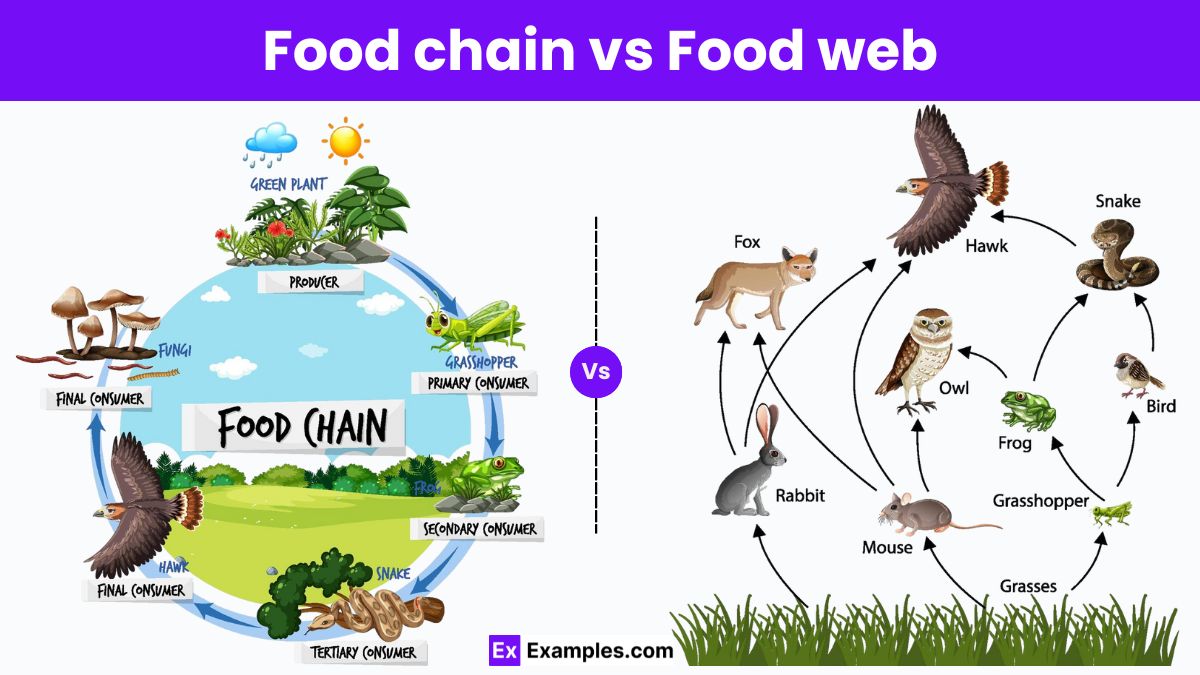Articles and Trivia
Write an articleFood Chains and Food Webs: Understanding Ecological Balance

Food chains and food webs illustrate the energy flow within ecosystems and the interdependence of organisms. A food chain is a simple, linear sequence where energy is transferred from producers (plants) to consumers (herbivores, carnivores, omnivores) and finally to decomposers (fungi, bacteria). Each step in the chain represents a trophic level. An example of a simple food chain is: Grass → Grasshopper → Frog → Snake → Hawk.
A food web, on the other hand, is a complex and interconnected network of multiple food chains. It represents various feeding relationships in an ecosystem, ensuring stability by providing alternative food sources when certain species decline. This complexity makes ecosystems more resilient to environmental changes.
Key Components of Food Chains and Webs:
- Producers (Autotrophs): Plants, algae, and some bacteria create food using sunlight through photosynthesis, forming the base of the food chain.
- Consumers (Heterotrophs): These are organisms that rely on other organisms for food. They include:
- Primary Consumers: Herbivores that eat producers (e.g., rabbits, deer, caterpillars).
- Secondary Consumers: Carnivores that eat herbivores (e.g., frogs, snakes, foxes).
- Tertiary Consumers: Top predators that consume secondary consumers (e.g., eagles, lions, sharks).
- Decomposers (Detritivores): Organisms like fungi, bacteria, and earthworms that break down dead organisms, recycling nutrients back into the ecosystem.
Importance of Food Webs:
- Ecosystem Stability: Food webs create a buffer against species loss by providing alternative energy pathways.
- Biodiversity Maintenance: They highlight the importance of each species in maintaining ecological balance.
- Energy Flow Representation: Food webs illustrate how energy moves and nutrients cycle through an ecosystem.
Threats to Food Chains and Food Webs:
Human activities pose significant threats to these natural processes. Deforestation reduces the number of producers, leading to food shortages for herbivores. Pollution affects water and soil quality, disrupting aquatic and terrestrial food chains. Climate change alters habitats, leading to imbalances in predator-prey relationships and species extinction.
Conclusion
Food chains and food webs are essential for sustaining life and maintaining ecological harmony. Understanding and protecting these interactions is crucial for conserving biodiversity and ensuring a stable environment for all organisms, including humans. By minimizing habitat destruction and adopting sustainable practices, we can preserve these intricate relationships for future generations.


